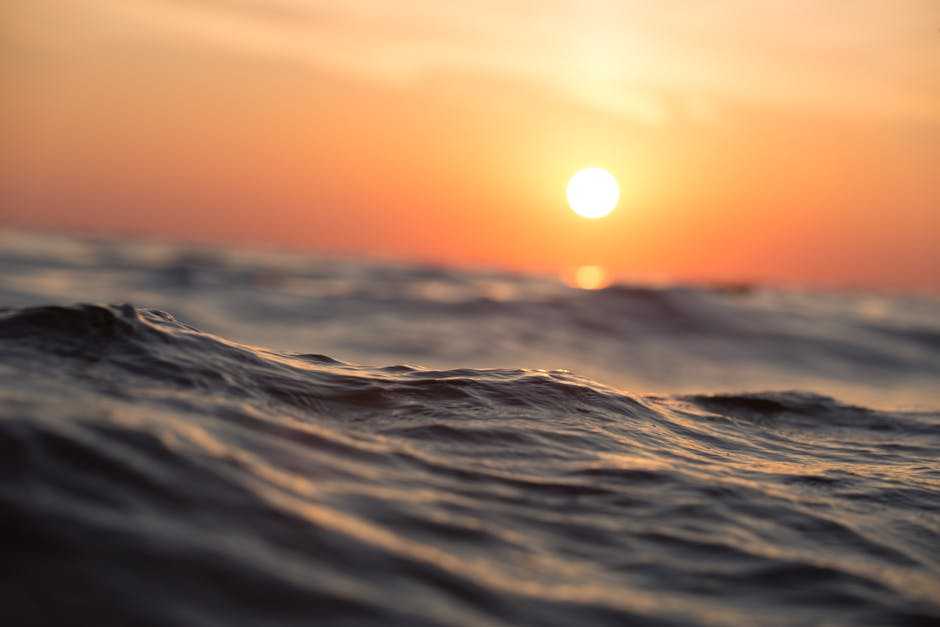Table of Contents
- Exploring the Beauty of Sunset Paintings Through Art History
- Techniques to Capture the Essence of a Sunset in Your Art
- Recommended Artists Who Mastered Sunset Landscapes
- Creating Your own Sunset Painting: Tips and Inspiration
- Q&A
- The Way Forward
Exploring the Beauty of Sunset Paintings Through Art History
Throughout art history,sunset paintings have captivated both artists and viewers,representing the ephemeral beauty of nature. From the vibrant hues of swirling oranges and reds to the tranquil blues and purples,sunsets evoke a range of emotions that artists seek to capture on canvas. Impressionists like Claude Monet and Pierre-Auguste Renoir celebrated the fleeting quality of light through their works, allowing the viewer to experience the momentS exquisite beauty.Their innovative use of color and brushwork brought a sense of movement and life to the simple act of watching the sun dip below the horizon.
In contrast, Romantic painters used sunset imagery to convey grander themes of emotion and the sublime. Artists like J.M.W.Turner infused their landscapes with dramatic skies, emphasizing the power and unpredictability of nature. Turner’s iconic paintings often blur the line between reality and imagination, inviting the observer to reflect on their own emotions and the fleeting nature of time.The use of warm colors in his works creates an atmosphere that resonates deep within, leaving a lasting impression long after the view is gone.
With the advent of modern art, the portrayal of sunsets evolved further. Abstract artists began to focus more on the essence of the sunset rather than a faithful representation. Artists such as Mark rothko used large color blocks to evoke the feeling of a sunset without the need for detailed landscapes. This shift not only highlights the beauty of the sunset itself but also engages viewers in a personal dialog with the artwork, allowing them to project their interpretations and feelings onto the painting.
| Artist | Style | Key Work | Year |
|---|---|---|---|
| Claude Monet | Impressionism | Impression, sunrise | 1872 |
| J.M.W. Turner | Romanticism | The Fighting Temeraire | 1839 |
| Mark Rothko | Abstract | Homage to matisse | 1954 |
Today, the tradition of depicting sunsets continues, inspiring countless artists across various mediums. Whether through painting, photography, or digital art, the sunset persists as a symbol of hope and reflection. Each era has left its mark, contributing to the diverse interpretations we see today. By exploring these historic variations in style and emotion, we not only appreciate the artistry behind sunset paintings but also connect to a timeless experience that transcends the canvas.


Techniques to Capture the Essence of a Sunset in Your Art
Capturing a sunset’s essence in your artwork requires a keen eye for detail and an understanding of color dynamics. Warm tones dominate this breathtaking time of day, offering hues of orange, pink, purple, and gold. Begin by observing the sky as it transitions, noting how the colors blend and contrast against one another. Utilize a palette that reflects these vibrant shades,mixing them to create depth and texture. Experimenting with gradient techniques on your canvas will help in representing the smooth shifts of color, allowing the lingering moments of light to shine through.
Lighting is crucial when portraying sunsets, as the play of light affects how colors appear. One effective method is to utilize glazing techniques, where layers of translucent paint build up to create luminosity and depth. This approach enables artists to emphasize the sun’s glow while capturing the surrounding shadows. As you paint, focus on the direction of light; it can cast long shadows and add dramatic flair to your landscape. To enhance your composition, consider the inclusion of objects like trees, mountains, or water, as their interaction with light can lead to striking contrasts that elevate the entire scene.
textural elements also play a significant role in representing a sunset.Incorporating techniques such as impasto, where paint is applied thickly, can bring an engaging three-dimensional quality to your work. This technique mimics the natural texture of clouds or the ripples of water as they catch the fading light. another effective strategy is to vary your brush strokes-from smooth lines that depict the sky to more jagged, dynamic strokes for foreground elements. These contrasting textures will draw in viewers, encouraging them to experience the scene much like they would in real life.
| Technique | Description | Benefits |
|---|---|---|
| Gradient Blending | Smooth transitions of color | Creates a realistic sky |
| Glazing | Layering translucent paint | Enhances luminosity |
| Impasto | Thick paint application | Adds texture and depth |
Lastly, capturing emotion is vital when depicting a sunset. Each sunset carries its own atmosphere, whether it inspires tranquility or evokes nostalgia. You can enhance these feelings using color symbolism; for example, deep reds and oranges can create a warm and inviting mood, while cooler purples and blues might evoke a sense of calm solitude. Infusing personal experiences or memories related to sunsets into your artwork can also provide a connection that resonates with viewers, transforming the piece into a vessel of shared emotion and experience.


Recommended Artists Who Mastered Sunset Landscapes
Sunset landscapes have long captivated artists, offering a unique blend of colors and emotion that brings the end of the day to life.Several renowned artists have dedicated their careers to mastering this enchanting theme. Their works not only highlight the breathtaking beauty of sunsets but also showcase the diverse techniques and interpretations that can arise from this natural phenomenon. Below are some artists who have excelled in portraying romantic skies ablaze with color.
- Claude Monet – A pioneer of Impressionism, Monet’s series of sunset paintings, especially Impression, Sunrise, transforms the fleeting moments of twilight into shimmering reflections of light and ambiance.
- J.M.W. Turner – Frequently enough called the “master of light,” Turner’s dramatic sunset landscapes, like The Fighting Temeraire, convey deep emotional resonance through vibrant colors and swirling forms.
- Vincent van Gogh – Known for his expressive use of color,van Gogh’s Starry Night Over the Rhône and Sunset at Montmajour capture the intensity and vitality of sunset hues,portraying a deeply personal connection with the scene.
- Georgia O’Keeffe - O’Keeffe’s minimalist approach is seen vividly in her works like Red Hills and White shell, where she encapsulates the essence of sunsets in striking, bold hues that emphasize shape and form.
Beyond these historic figures, contemporary artists continue to explore the theme of sunsets with innovation and flair. For instance, artists like Sarah Morris or David Hockney use modern techniques to present sunsets in fresh ways that reflect contemporary life and environment. Their contributions remind us that the allure of a sunset remains powerful, evolving with each new perspective.
| Artist | Notable Work | Style |
|---|---|---|
| Claude Monet | Impression, Sunrise | Impressionism |
| J.M.W. Turner | The Fighting Temeraire | Romanticism |
| Vincent van Gogh | Starry Night Over the Rhône | Post-Impressionism |
| georgia O’Keeffe | Red hills and White Shell | Modernism |
These artists have established an remarkable legacy through their works, continuing to inspire future generations. Each unique style and interpretation enriches the art world, inviting viewers to experience sunsets from various perspectives. Whether through vibrant color palettes or subtle brushwork, their contributions make the beauty of sunset landscapes timeless and universally appreciated.


Creating Your Own Sunset Painting: Tips and Inspiration
To embark on your journey of creating a sunset painting, consider the various elements that make a sunset captivating. Think about the color palette you want to use.Sunsets offer a breathtaking array of colors, from vivid oranges and deep reds to soft pinks and vibrant yellows. Experiment with mixing acrylics or oils to achieve the perfect blend, or use pastels for a softer approach. Here are some color suggestions to inspire your palette:
- Warm tones: Red, orange, yellow
- Cool tones: Blues, purples
- Neutrals: Soft whites or sandy beiges
Next, consider the composition of your painting.A well-structured layout will enhance the visual impact of your artwork. You might choose to depict a landscape silhouetted against the sunset, or focus entirely on the sky and clouds. Here are a few composition ideas:
- Horizon line: A low horizon can emphasize the sky’s colors.
- Silhouettes: Include elements like trees, buildings, or mountains in the foreground.
- Reflections: Capture reflections on water to add depth.
as you paint, pay attention to the brush techniques that will best represent the blending of colors in the sky. Techniques such as dry brushing, glazing, or even using a sponge can create interesting textures. Experiment with what feels right for you; don’t hesitate to mix various methods to find your unique style. Here’s a brief comparison of different brush techniques:
| Technique | Description |
|---|---|
| dry Brushing | Using a dry brush for a soft, feathered effect. |
| Glazing | Layering thin washes to create depth. |
| Sponge Technique | Using a sponge to dab on color for a textured look. |
don’t shy away from inspiration that speaks to you. Seek out images of sunsets in various locations, from tropical beaches to serene mountains. Consider not just the colors,but the mood of each scene. These reference points can spark your imagination and guide your brushstrokes. Whether it’s a photograph,a piece of artwork,or even nature itself,let the world around you inspire a sunset that reflects your personal vision.
Q&A
Q&A: Exploring the Beauty of Sunset Paintings
Q1: What makes sunset paintings so captivating to viewers?
A1: Sunset paintings evoke a sense of tranquility and wonder, capturing the fleeting moments when day transitions to night. The vibrant colors-rich oranges, deep reds, and soft purples-create an emotional response, drawing viewers into a serene visual experience. They often symbolize hope and renewal, making them universally relatable.
Q2: How do artists typically capture the essence of a sunset in their work?
A2: Artists employ a variety of techniques to encapsulate the essence of a sunset. Many utilize bold brush strokes to convey movement and light.They mix colors carefully to mimic the gradual blending seen in nature and often play with contrasts to highlight the sun against a darker horizon. Composition and perspective also play crucial roles; some artists frame the sunset within a landscape, while others focus solely on the sky.
Q3: Are there specific styles or movements known for sunset paintings?
A3: Yes, several art movements have celebrated the beauty of sunsets. The Impressionists, for example, were known for their interest in the effects of light and color, frequently painting sunsets en plein air. Artists like Claude Monet captured the shifting qualities of light in their works. Additionally, Romanticism and Expressionism also featured sunset themes, emphasizing emotion and the sublime nature of the evening sky.
Q4: Can you share notable examples of sunset paintings?
A4: Certainly! One iconic example is “Impression, Sunrise” by Claude Monet, which is credited with inspiring the Impressionist movement. Another famous work is “The Scream” by Edvard Munch, where the tumultuous sky plays a significant role in the painting’s emotional impact. Additionally,”The Starry Night” by Vincent van Gogh,while more focused on the night sky,beautifully captures the transition from sunset to starlit evening.
Q5: How can viewers connect more deeply with sunset paintings?
A5: To forge a deeper connection with sunset paintings, viewers can engage their senses and personal memories associated with sunsets. Reflecting on specific sunsets they have experienced can enrich their appreciation. Additionally,exploring the artist’s background and the ancient context in which the painting was created can unveil new layers of meaning,enhancing the viewer’s emotional and intellectual connection to the artwork.
Q6: What should novice collectors consider when acquiring sunset paintings?
A6: Novice collectors should consider a few key factors: the artist’s background, the provenance of the painting, and the artwork’s emotional impact. It’s also wise to evaluate the piece in relation to one’s own aesthetic preferences and home decor. Lastly, investing in artwork that resonates personally can lead to a more fulfilling collector experience.
Q7: Are there modern techniques artists use to depict sunsets today?
A7: Absolutely! Contemporary artists frequently enough blend traditional oil techniques with digital media to create stunning sunset representations. Some explore abstract interpretations, using unconventional materials and mixed media to express modern perspectives on nature. Digital art has also expanded the possibilities, allowing for intricate designs and vibrant colors that mimic the beauty of real sunsets with innovative flair.
Feel free to delve into the world of sunset paintings-each piece invites a unique emotional journey, painted in hues that speak to the heart.
